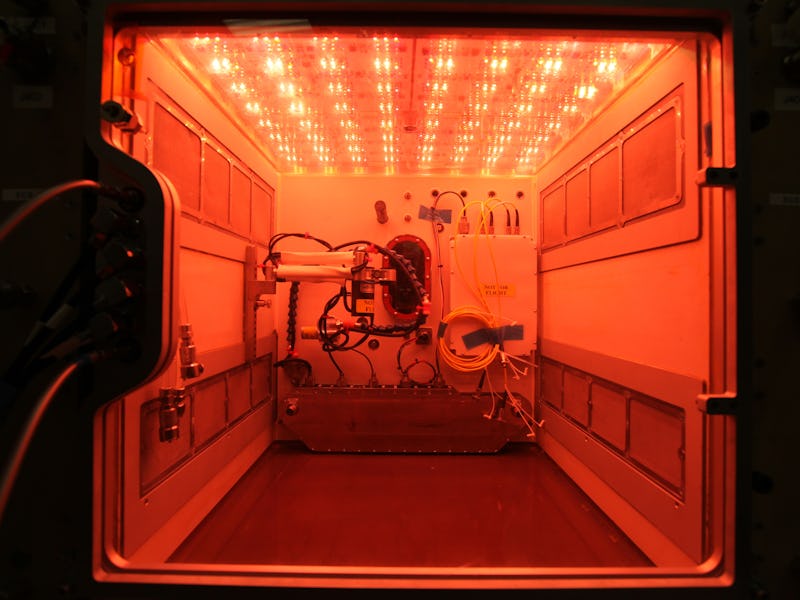Let’s hope Earth’s astronauts have some green space thumbs. A prototype of NASA’s latest space farming system was delivered to Kennedy Space Center in mid-November, and engineers and scientists are training with the model so they can be ready for the final unit’s arrival to the International Space Station in early 2017. The Advanced Plant Habitat, as it’s called, will eventually be installed on the International Space Station, where astronauts will grow some experimental plants starting in 2017.
If humans want to colonize the cosmos, they’ll have to produce food for themselves. There are still a lot of unknowns about how to conduct agriculture in space, but the ISS crew have been trying their hand at zero-g gardening for a couple of years now, with varying success.
The new APH features 180 sensors to control every aspect of the growing environment, including relative humidity, the amount and quality of light, oxygen levels, and temperature. An array of LEDs shine brighter than the current ISS farming system, and these new lights can produce red, green, blue, white, and infrared light.
A test version of NASA's Advanced Plant Habitat.
The first crop planned for the APH is a plant called Arabidopsis — also known as rock cress. It’s related to cabbage and mustard, and the experiment will help scientists learn more about how plants respond to zero-g growing conditions. Arabidopsis is a model organism and has had its genome sequenced, so scientists already know a lot about how it grows under typical conditions on Earth and will be able to make precise comparisons between space and terrestrial plants.
The current system on the International Space Station, called Veggie, was installed back in 2014, and has since grown lettuce and zinnias. The APH should let astronauts diversify their diets a bit while they’re tossing around en route to Mars.
And that’s why space farming is such a critical thing right now. The APH is another step to making a space travel and the colonization of other worlds sustainable, so hopefully they won’t have to bring out their inner Mark Watney and figure out how to grow potatoes on Mars on the fly.
